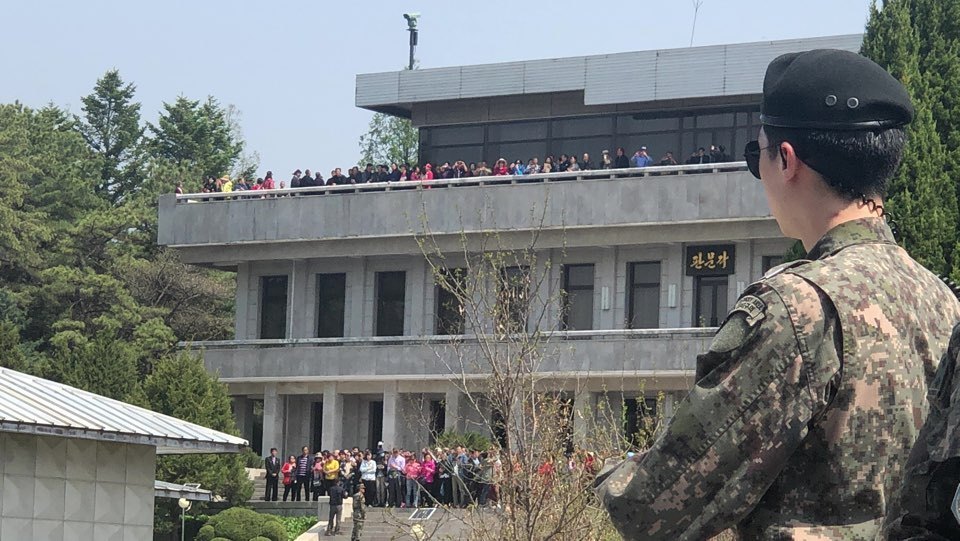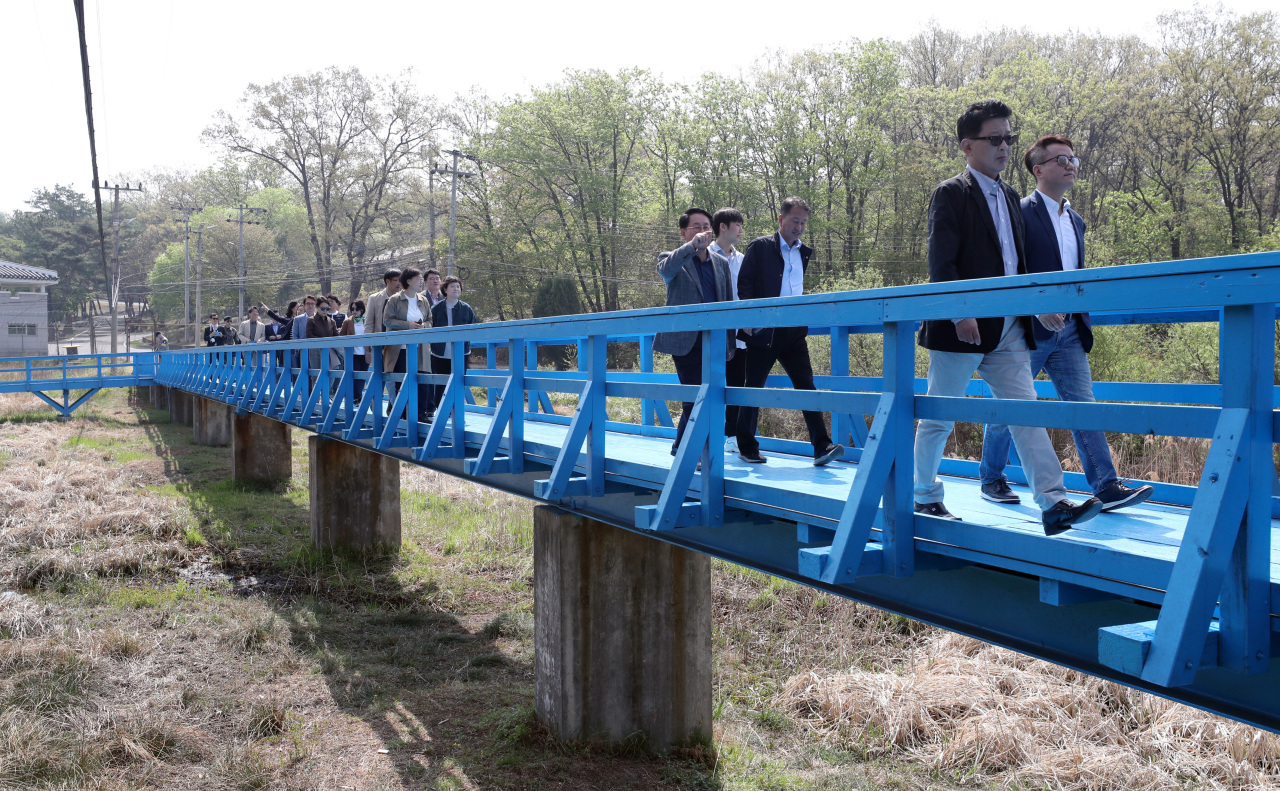Government reviews allowing South Koreans to tour JSA in small groups
By Jo He-rimPublished : Sept. 30, 2019 - 16:32
South Korean nationals will be able to tour the Joint Security Area in the Demilitarized Zone bordering North Korea in small groups, authorities said Monday.
According to an official from the Ministry of Unification, the ministry and other concerned government bodies have begun reviewing a plan to allow small groups of South Korean tourists from the first half of next year.
According to an official from the Ministry of Unification, the ministry and other concerned government bodies have begun reviewing a plan to allow small groups of South Korean tourists from the first half of next year.


Currently, South Korean nationals wishing to visit the area must apply in groups of more than 30 and fewer than 45. While there are no such limits for foreign tourists, for South Koreans they remain in place for “security reasons.”
If the government lifts the restrictions, South Koreans will be able to tour the southern side of the JSA, which has been disarmed under the terms of an inter-Korean military agreement concluded in September 2018.
While the two Koreas also agreed to allow freedom of movement for civilians inside the demilitarized zone, which would allow them to freely cross the Military Demarcation Line, the plan has not yet been implemented because North Korea has been unresponsive.
The government is also reviewing the possibility of integrating the tours, which currently fall under two systems. The National Intelligence Agency leads tour groups consisting of over 30 people, while the Unification Ministry is in charge of VIPs and groups consisting of up to 19 special guests. VIP groups include senior government officials, while special guests include the families of government officials as well as reporters.
By Jo He-rim (herim@herald.com)








![[KH Explains] How should Korea adjust its trade defenses against Chinese EVs?](http://res.heraldm.com/phpwas/restmb_idxmake.php?idx=644&simg=/content/image/2024/04/15/20240415050562_0.jpg&u=20240415144419)











![[Today’s K-pop] Stray Kids to return soon: report](http://res.heraldm.com/phpwas/restmb_idxmake.php?idx=642&simg=/content/image/2024/04/16/20240416050713_0.jpg&u=)